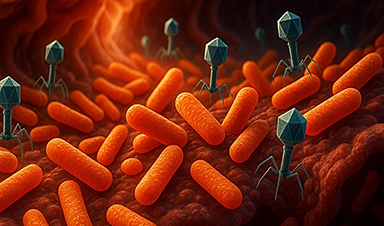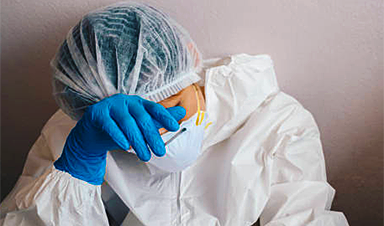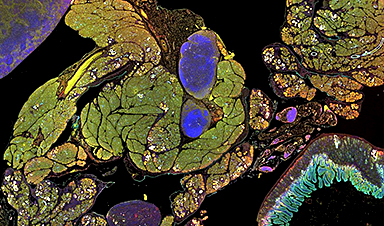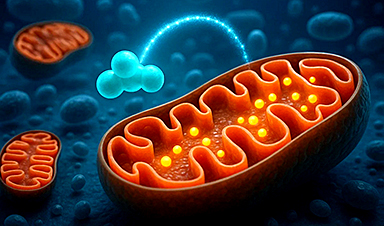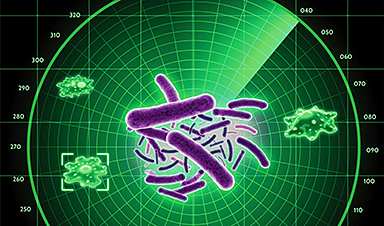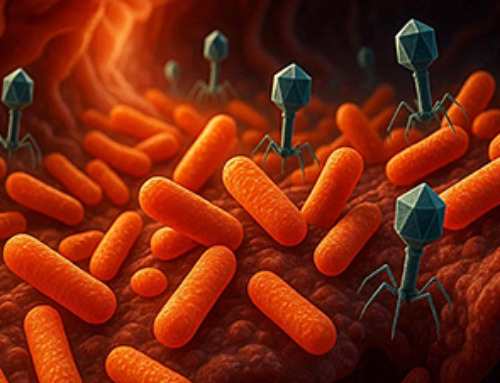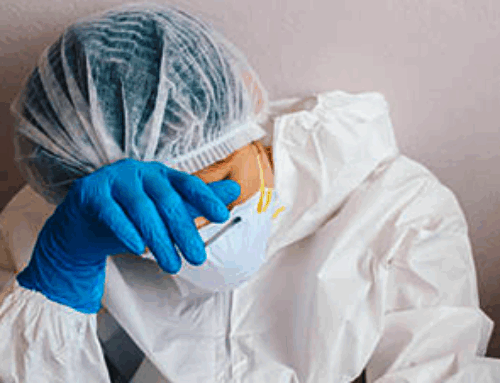A recent study reveals that an antibiotic used for liver disease patients may increase their risk of contracting a dangerous superbug.
An international team of researchers has discovered that rifaximin, a commonly prescribed antibiotic for liver disease patients, is contributing to the global rise of a highly resistant strain of vancomycin-resistant Enterococcus faecium (VRE). This superbug, which frequently causes severe infections in hospitalized patients, is becoming increasingly difficult to treat.
The study, published in Nature, reveals that rifaximin use is accelerating resistance to daptomycin—one of the last remaining effective antibiotics against VRE infections.
Led by scientists from the University of Melbourne’s Peter Doherty Institute for Infection and Immunity (Doherty Institute) and Austin Health, the research underscores the urgent need for a more comprehensive understanding of the unintended consequences of antibiotic use. It highlights the critical importance of responsible antibiotic prescribing to mitigate the spread of antimicrobial resistance.
Their findings reinforce the recent political declaration of the UN General Assembly High-Level Meeting on Antimicrobial Resistance (26 Sept 2024), where world leaders committed to decisive action on antimicrobial resistance, including reducing the estimated 4.95 million AMR-associated human deaths annually by 10 per cent by 2030.
How Rifaximin Promotes Antibiotic Resistance
The eight-year study drew on several disciplines, including molecular microbiology, bioinformatics and clinical science. Using large-scale genomics – the study of an organism’s DNA makeup – the scientists were able to identify changes in the DNA of daptomycin-resistant VRE that were absent in susceptible strains. Subsequent laboratory experimentation and clinical studies showed that rifaximin use caused these changes and resulted in the emergence of daptomycin-resistant VRE.
The University of Melbourne’s Dr Glen Carter, a Senior Research Fellow at the Doherty Institute and senior author of the study, said the research challenges the long-held belief that rifaximin poses a ‘low risk’ for causing antibiotic resistance.
“We’ve shown that rifaximin makes VRE resistant to daptomycin in a way that has not been seen before,” Dr Carter said.
“It is also of concern that these daptomycin-resistant VRE might be transmitted to other patients in the hospital; a hypothesis that we are presently investigating.”
A “Supercharged” Resistance Mechanism
The University of Melbourne’s Dr Adrianna Turner, a Research Officer at the Doherty Institute and first author of the study, said rifaximin triggers specific changes in an enzyme called RNA Polymerase within the bacteria. These changes “upregulate” a previously unknown gene cluster (prdRAB) leading to alterations in the VRE cell membrane and causing cross-resistance to daptomycin.
“When bacteria become resistant to an antibiotic, it’s a bit like gaining a new ability in a video game, like super-speed. But when exposed to rifaximin, the VRE bacteria don’t just get one boost – they gain multiple abilities, like super-speed and super-strength, allowing them to easily defeat even the final boss, which in this case is the antibiotic daptomycin,” Dr Turner said.
“In other words, rifaximin doesn’t just make bacteria resistant to one antibiotic; it can make them resistant to others, including critical last-resort antibiotics like daptomycin.”
Associate Professor Jason Kwong, Infectious Diseases Physician at Austin Health and lead investigator of the clinical studies, emphasized two critical implications of the findings.
“Firstly, clinicians must exercise caution when treating VRE infections in patients who have been taking rifaximin, since daptomycin’s efficacy may be compromised, necessitating laboratory verification before use,” Associate Professor Kwong said.
“Secondly, the findings underscore the importance of regulatory bodies considering ‘off-target and cross class’ effects when approving new drugs. For antibiotics, this means understanding whether exposure to one agent, like rifaximin, could induce resistance against other antibiotics – even those that work differently.
“Rifaximin is still a very effective medication when used appropriately and patients with advanced liver disease who are currently taking it should continue to do so. But we need to understand the implications going forward both when treating individual patients and from a public health perspective.”
The University of Melbourne’s Dr Claire Gorrie, a senior bioinformatician from the Doherty Institute and co-senior author, said the research highlights how cutting-edge technologies, combined with interdisciplinary collaboration, can uncover exactly how and why bacteria develop resistance to antibiotics – even those they’ve never encountered.
“These insights are crucial for developing smarter, more sustainable strategies for antibiotic use, especially as these life-saving drugs become an increasingly precious resource,” Dr Gorrie said.
Professor Benjamin Howden, the Director of the Microbiological Diagnostic Unit Public Health Laboratory at the Doherty Institute and an Infectious Diseases Physician at Austin Health, whose laboratory led the project, said the research will help ensure daptomycin remains an effective antibiotic for treating severe VRE infections in hospitals in Australia and around the world, particularly in the most vulnerable patients.
“Our findings highlight the critical need for effective genomics-based surveillance to detect emerging antimicrobial resistance. They also underscore the importance of judicious antibiotic use to safeguard vital last-resort treatments like daptomycin,” Professor Howden concluded.
Reference: “Rifaximin prophylaxis causes resistance to the last-resort antibiotic daptomycin” by Adrianna M. Turner, Lucy Li, Ian R. Monk, Jean Y. H. Lee, Danielle J. Ingle, Stephanie Portelli, Norelle L. Sherry, Nicole Isles, Torsten Seemann, Liam K. Sharkey, Calum J. Walsh, Gavin E. Reid, Shuai Nie, Bart A. Eijkelkamp, Natasha E. Holmes, Brennan Collis, Sara Vogrin, Andreas Hiergeist, Daniela Weber, Andre Gessner, Ernst Holler, David B. Ascher, Sebastian Duchene, Nichollas E. Scott, Timothy P. Stinear, Jason C. Kwong, Claire L. Gorrie, Benjamin P. Howden and Glen P. Carter, 23 October 2024, Nature.
DOI: 10.1038/s41586-024-08095-4
The team’s main collaborators were Bio21 Molecular Science and Biotechnology Institute; University Medical Center, Regensburg, Germany; The University of Queensland; and Flinders University, Adelaide.
The study was funded by the National Health and Medical Research Council.
News
Scientists Flip a Gut Virus “Kill Switch” – Expose a Hidden Threat in Antibiotic Treatment
Scientists have long known that bacteriophages, viruses that infect bacteria, live in our gut, but exactly what they do has remained elusive. Researchers developed a clever mouse model that can temporarily eliminate these phages [...]
Enhanced Antibacterial Polylactic Acid-Curcumin Nanofibers for Wound Dressing
Background Wound healing is a complex physiological process that can be compromised by infection and impaired tissue regeneration. Conventional dressings, typically made from natural fibers such as cotton or linen, offer limited functionality. Nanofiber [...]
Global Nanomaterial Regulation: A Country-by-Country Comparison
Nanomaterials are materials with at least one dimension smaller than 100 nanometres (about 100,000 times thinner than a human hair). Because of their tiny size, they have unique properties that can be useful in [...]
Pandemic Potential: Scientists Discover 3 Hotspots of Deadly Emerging Disease in the US
Virginia Tech researchers discovered six new rodent carriers of hantavirus and identified U.S. hotspots, highlighting the virus’s adaptability and the impact of climate and ecology on its spread. Hantavirus recently drew public attention following reports [...]
Studies detail high rates of long COVID among healthcare, dental workers
Researchers have estimated approximately 8% of Americas have ever experienced long COVID, or lasting symptoms, following an acute COVID-19 infection. Now two recent international studies suggest that the percentage is much higher among healthcare workers [...]
Melting Arctic Ice May Unleash Ancient Deadly Diseases, Scientists Warn
Melting Arctic ice increases human and animal interactions, raising the risk of infectious disease spread. Researchers urge early intervention and surveillance. Climate change is opening new pathways for the spread of infectious diseases such [...]
Scientists May Have Found a Secret Weapon To Stop Pancreatic Cancer Before It Starts
Researchers at Cold Spring Harbor Laboratory have found that blocking the FGFR2 and EGFR genes can stop early-stage pancreatic cancer from progressing, offering a promising path toward prevention. Pancreatic cancer is expected to become [...]
Breakthrough Drug Restores Vision: Researchers Successfully Reverse Retinal Damage
Blocking the PROX1 protein allowed KAIST researchers to regenerate damaged retinas and restore vision in mice. Vision is one of the most important human senses, yet more than 300 million people around the world are at [...]
Differentiating cancerous and healthy cells through motion analysis
Researchers from Tokyo Metropolitan University have found that the motion of unlabeled cells can be used to tell whether they are cancerous or healthy. They observed malignant fibrosarcoma [...]
This Tiny Cellular Gate Could Be the Key to Curing Cancer – And Regrowing Hair
After more than five decades of mystery, scientists have finally unveiled the detailed structure and function of a long-theorized molecular machine in our mitochondria — the mitochondrial pyruvate carrier. This microscopic gatekeeper controls how [...]
Unlocking Vision’s Secrets: Researchers Reveal 3D Structure of Key Eye Protein
Researchers have uncovered the 3D structure of RBP3, a key protein in vision, revealing how it transports retinoids and fatty acids and how its dysfunction may lead to retinal diseases. Proteins play a critical [...]
5 Key Facts About Nanoplastics and How They Affect the Human Body
Nanoplastics are typically defined as plastic particles smaller than 1000 nanometers. These particles are increasingly being detected in human tissues: they can bypass biological barriers, accumulate in organs, and may influence health in ways [...]
Measles Is Back: Doctors Warn of Dangerous Surge Across the U.S.
Parents are encouraged to contact their pediatrician if their child has been exposed to measles or is showing symptoms. Pediatric infectious disease experts are emphasizing the critical importance of measles vaccination, as the highly [...]
AI at the Speed of Light: How Silicon Photonics Are Reinventing Hardware
A cutting-edge AI acceleration platform powered by light rather than electricity could revolutionize how AI is trained and deployed. Using photonic integrated circuits made from advanced III-V semiconductors, researchers have developed a system that vastly [...]
A Grain of Brain, 523 Million Synapses, Most Complicated Neuroscience Experiment Ever Attempted
A team of over 150 scientists has achieved what once seemed impossible: a complete wiring and activity map of a tiny section of a mammalian brain. This feat, part of the MICrONS Project, rivals [...]
The Secret “Radar” Bacteria Use To Outsmart Their Enemies
A chemical radar allows bacteria to sense and eliminate predators. Investigating how microorganisms communicate deepens our understanding of the complex ecological interactions that shape our environment is an area of key focus for the [...]

